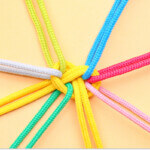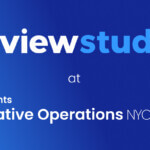Albert Einstein once said, “I have no special talents, I am only passionately curious.” From Stephen Hawking to David Bowie, Walt Disney to Marie Curie, many great minds have hailed curiosity as the driving force behind creative thinking, innovation, and discovery.
As a species, though, we have quite an uneasy relationship with our curiosity. We are weaned off daydreaming and constant questioning from an early age. We are told curiosity was what killed the cat.
However, without cultivating curiosity, we risk becoming complacent. Without curiosity, we passively rely on the status quo and cut ourselves off from potential sources of inspiration. Whether you’re a designer, a marketer, or the CEO, embracing curiosity will boost your range and quality of creativity. It will help you find inspiration, approach your projects from fresh angles, and empathize with your audience and colleagues.
Here’s a brief look at how cultivating curiosity can help you adopt an inquisitive and creative mindset.
Defining Curiosity
Scientists have been closely studying curiosity since the 19th century but still struggle to agree on a precise definition of what curiosity is and how it works.
In 1954, Daniel Berlyne furthered our understanding of just how wide-reaching curiosity can be by highlighting the different forms it can take:
- Epistemic Curiosity: The urge to acquire new knowledge.
- Perceptual Curiosity: The urge to experience new sensations.
- Specific Curiosity: The urge to find out about one topic.
- Diversive Curiosity: The urge to learn or experience things in general for the sake of being stimulated.
A popular theory posited by George Loewenstein in 1994 is that curiosity occurs when we become aware of a gap in our knowledge and are motivated to fill it. He believed that what set curiosity apart from other forms of learning or exploration, was the fact that the urge to “find out” came from inside us, rather than being triggered by an external pressure (like the instinct to survive). The problem with this idea is that it is impossible, especially for the outside observer, to classify if a behavior is internally or externally motivated.
Contrastingly, a review in 2015 concluded that we don’t yet know enough about the mechanics of curiosity to make distinctions. Scientifically, instead of “curiosity”, terms such as “play, exploration, reinforcement learning, latent learning, neophilia, and self-reported desire for information” are used. The review adopted a simpler, more generalized definition of curiosity as ‘a drive for information’.
Wherever you draw the line, there’s no denying the important role the urge to gather new information plays in how we interact with the world.

Curiosity and Creativity at Work
“Curiosity about life in all of its aspects, I think, is still the secret of great creative people.” – Leo Burnett
Curiosity is an asset in many professional contexts, whether you’re brainstorming, responding to a problem, or presenting a project.
The close link between creativity and curiosity is vital when it comes to idea generation. Ideation involves forming fresh connections between bits of information. By exploring and pushing the limits of your knowledge, you gather more information to draw on during this process, while exposing yourself to varied sources of inspiration.
The open-mindedness that goes hand in hand with curiosity is particularly useful when it comes to creative problem-solving. Not only do you have more knowledge to draw from but it expands your cognitive flexibility while making you less defensive in the face of setbacks.
As Francesca Gino, writing for Harvard Business Review, put it: “Especially when under pressure, we narrow in on what immediately seems the best course of action. But those who are passionate about continuous learning contemplate a wide range of options and perspectives.” Gino also believes that remaining curious means we’re less likely to fall prey to confirmation bias.
Curiosity can also help you cultivate empathy. It drives you to learn about the people around you and to understand how they think. Whether you’re giving creative feedback, doing product research, or putting together a presentation, being actively interested in your audience will help guide your work.
How to Be More Curious
Is it possible to make yourself more curious? Curiosity is often considered a personality trait: something which certain people have in abundance and others don’t.
A 2020 review of the scientific approach to studying curiosity acknowledges this but adds that “curiosity, while varying across individuals, also fluctuates within individuals”. So, even if you don’t feel like a naturally inquisitive person, there are likely times and contexts where your curiosity flourishes.
Here are 8 strategies to help you develop your curiosity:
Indulge Your Interests
If you want to encourage a more curious outlook, make time to explore those subjects that naturally spark your interest, without worrying that they’re frivolous or unhelpful.
Maybe you’re curious about how someone came up with the idea for a tool you’re using, or have a sudden interest in reading about the history of the Roman Empire. While not directly related to your productivity at work, these topics could provide you with creative inspiration.
“Study hard what interests you the most in the most undisciplined, irreverent, and original manner possible.” – Richard Feynmann
Ask Questions
This can be a scary one. We often think of asking questions as a waste of time and possibly a sign of incompetence. However, asking questions reduces misunderstandings and gives you – and everyone else – a more nuanced view of a situation.
As an exercise (especially looking at my fellow introverts) try to get yourself used to asking questions in friendlier environments and then challenge yourself to work them into more intimidating contexts.
Embrace Aimlessness
Professors Stephen Eppinger and Marek Kowalkiewicz recommend changing our critical attitude toward aimlessness. As Kowalkiewicz puts it: “You should make space for a certain amount of aimless exploration — aimless, which is not the same as pointless.”
Being curious means acknowledging that not everything we learn or do will be useful. The act of exploring and enquiring without an expressed endgame gets us into a mindset where we leave preconceptions behind. You also never know how something you learn might be of use later.

Use Different Techniques
Calculators should’ve eliminated the need to do any math in our heads. But math is still taught – and still an important life skill. Not because we need it to function, but because the process improves how we think.
The same is true of our reliance on search engines. If every question you have is answered within seconds, you don’t need to speculate or properly think the question through. Receiving a pinpointed result also means you miss out on supplementary knowledge and context that you might have gained if you’d had to manually look for the answer in a resource.
Maybe delay your search until you’ve at least attempted to figure out the answer or try making your search deliberately broad at first. If you have time, browsing a library or bookstore could be even better. It’s like playing Scrabble with a physical Oxford or looking something up in the old-fashioned encyclopedia set. It turns simple information seeking into a more curiosity-fulfilling experience.
Be a Curious Conversationalist
The most interesting people in the world have at least one thing in common – they are great listeners.
Whether you’re chatting to a colleague about a project or to a client in the hope of better understanding their needs, try to listen carefully to what someone is saying and use it to formulate questions that will draw out more interesting information. You’ll get a better understanding of the person, possibly learn something new, and as a bonus, make a good impression.
Seek Out (New) Experiences
By increasing your exposure to new experiences, you deepen your knowledge base and lessen your natural mistrust of unfamiliar things.
This doesn’t necessarily mean taking up extreme sports or traveling to another country (though it could!). Just changing your usual walking route or switching up your coffee shop is a start.
Pay Attention
Try to focus on everyday activities and sensations. You may notice things you hadn’t thought about before, like the way your fingers flex as you type or the complex processes that go into making a single cup of coffee.
Attention to detail not only pushes you to discover new ideas but also trains you to find inspiration in places you wouldn’t usually expect.
Read (and Watch) Widely
Challenge yourself to try a book, show, or film that you wouldn’t usually pick. Not all of them will set your world on fire but you might still discover something valuable. And more directly, there are great books out there to further inspire creativity.
Develop, Train, and Use Your Curiosity
“What you learn today, for no reason at all, will help you discover all the wonderful secrets of tomorrow.” – Norton Juster
Viewing curiosity as a vital part of the creative process enables you to find inspiration anywhere. It could also help you think in more non-linear and innovative ways, whether you’re creating a new product, developing a new app, or launching a marketing campaign.
Curiosity is something that needs nurturing. By making time for your curiosity and allowing for a more relaxed approach to aimlessness, you’ll cultivate a natural sense of wonder. Curiosity has the power to help you discover a brilliant idea or approach in a place you’d never have thought to look.





